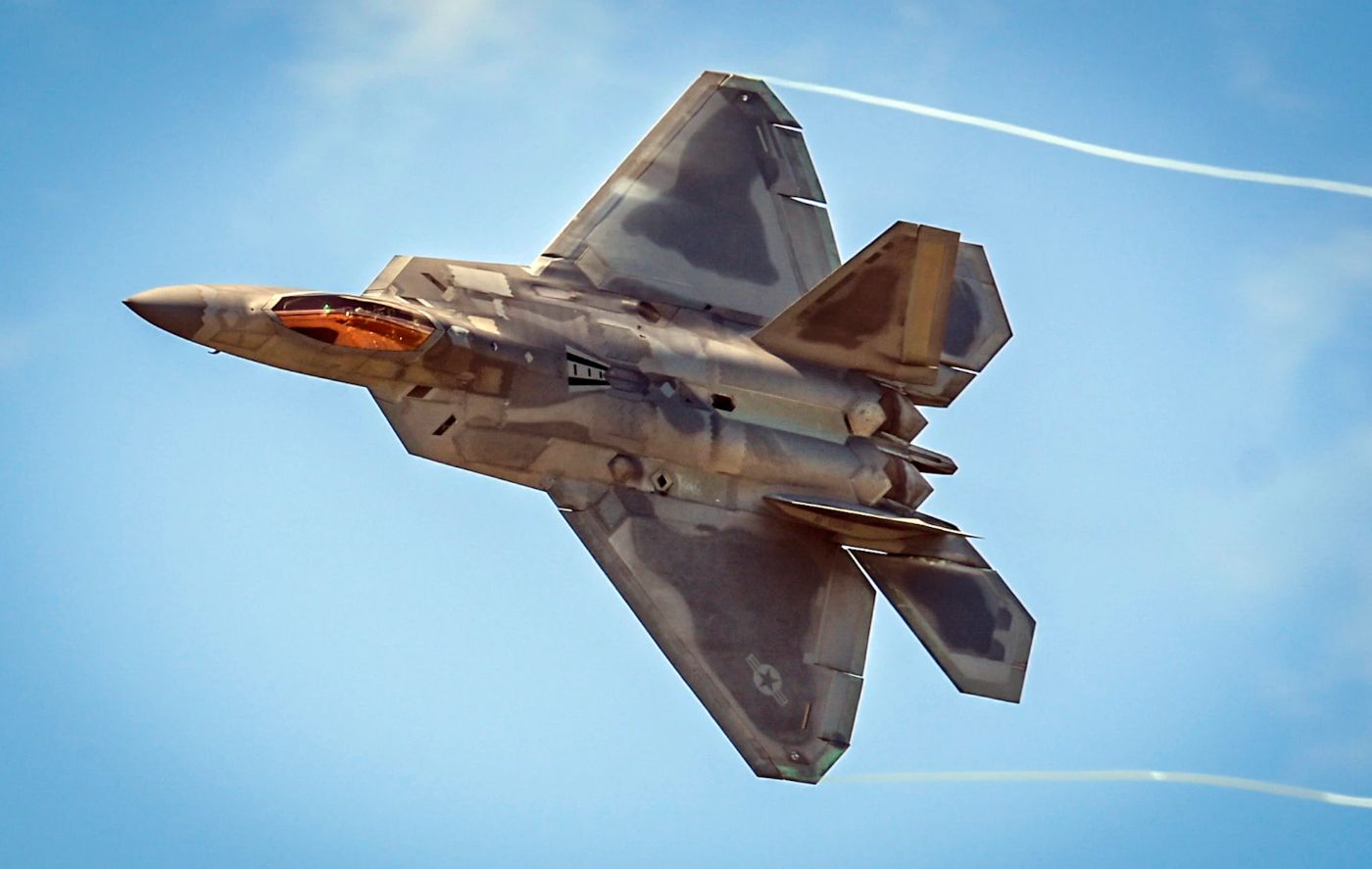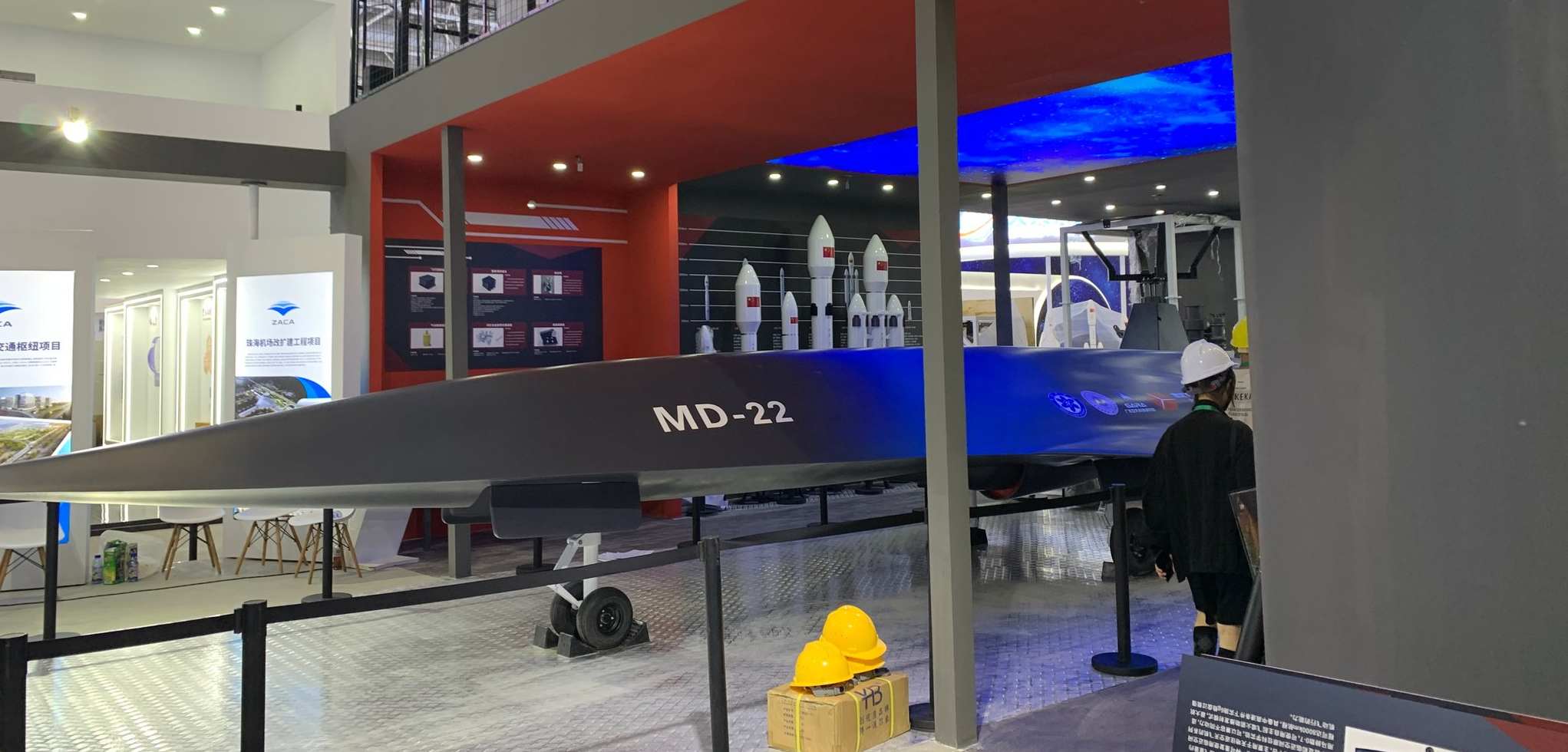In recent years, China has increasingly focused on benchmarking its military technology against the United States’ most advanced fighter aircraft, the F-22 Raptor.
This infatuation with the F-22 Raptor is palpable in China’s relentless drive for technological advancements to match or surpass the capabilities of the formidable stealth fighter.
From claiming to develop cutting-edge quantum radar systems to ground-to-air hypersonic missiles designed specifically to counter the F-22s, Chinese military innovations have frequently been juxtaposed against the F-22’s capabilities.
The F-22 Raptor hailed as the world’s most advanced and powerful stealth fighter, is so highly regarded by the United States that it has refrained from selling the aircraft to even its closest allies, emphasizing its strategic significance and unparalleled capabilities.
Now, China has set its sights on challenging the aerodynamic performance of the F-22 with its latest technological innovation: “a new breed of unmanned hypersonic aircraft.”
Hong Kong-based SCMP claimed that Chinese researchers have developed a new drone that boasts a lift-to-drag ratio of 8.4 during subsonic flight, placing it on par with its American F-22.

The lift-to-drag ratio, a key indicator of aerodynamic efficiency, plays a crucial role in an aircraft’s ability to resist gravity and maintain flight stability.
While the F-22’s maximum lift-to-drag ratio is also 8.4, it decreases significantly at supersonic speeds, unlike the Chinese hypersonic drone, which maintains a ratio above four even at six times the speed of sound, according to the report.
This superior aerodynamic efficiency allows the Chinese drone to maneuver effectively at high altitudes and poses a challenge to missile defense systems reliant on predicting flight paths.
Notably, the data regarding China’s hypersonic vehicles marks a transition from theoretical models to tangible wind tunnel tests conducted with real-world engineering constraints.
The report noted that the findings of these wind tunnel tests were documented in the peer-reviewed Chinese academic journal Acta Mechanica Sinica.
Nonetheless, if true, the event signifies a significant step forward in China’s military aerospace development efforts, as confirmed by Zhang Chenan, a researcher with the Chinese Academy of Sciences.
Despite challenges associated with lift-to-drag ratio, stability, thermal protection, and payload integration, Chinese scientists and engineers have achieved “engineering practicality” in this technology.
Their forthcoming endeavors will concentrate on cost reduction, enhancing reliability, and augmenting radar stealth performance to facilitate a gradual transition from functionality to usability.
MD-22 Hypersonic Flight Vehicle
Chinese researchers refrained from divulging the specific drone model; however, it appears to resemble the MD-22 wide-speed-zone hypersonic flight vehicle unveiled in 2019. The Guangdong Aerospace Science and Industry Research Institute developed the drone, affiliated with the Institute of Mechanics.
The designation “MD-22” finds its roots in “mingdi,” or whistling arrow, an ancient concept evoked by Chinese historian Sima Qian more than 2,000 years ago. This term symbolizes the grave repercussions awaiting those who defy authority, encapsulating the notion of swift and decisive punishment for disobedience.
According to the reports, the MD-22 serves as a reusable hypersonic technology test platform for near-space applications, boasting remarkable characteristics such as ultra-long range and high maneuverability.
This drone was also showcased during the Airshow China 2022 exhibition held in Zhuhai. It is adaptable to various thrusts and capable of speeds ranging from 0 to 7 Mach.
The UAV can autonomously take off or be launched by a rocket, withstanding stable disk overloads of up to 6G under medium and high-speed conditions. Earlier discussions suggested the potential utilization of the MD-22 in the development of 6th-generation aircraft.

Remarkably, this unmanned aerial vehicle can transport a payload of 600kg (1,300lbs) at speeds of up to Mach 7 over a distance of 8,000km (5,000 miles), equivalent to the expanse between China and the continental United States.
Weighing a mere 4 tonnes, the MD-22 can be propelled by an air-breathing engine for take-off on airport runways or launched vertically from a rocket launch site. It exhibits resilience against up to six times gravity overload while executing high-speed turns.
However, the latest model spans over 12 meters in length with an almost six-meter wingspan, significantly larger than its predecessor, the MD-22. However, its aerodynamic configuration, featuring three engine nacelles protruding from the tail, remains largely unchanged.
Nonetheless, the recent report did not offer any specific timeline regarding the completion and deployment of this new drone.
- Contact the author at ashishmichel(at)gmail.com
- Follow EurAsian Times on Google News




